4N/5D in Sri Lanka
Hill Country & Heritage Trail
Ayubowan – welcome to Sri Lanka. From the cinnamon-scented coast of Negombo to the ancient majesty of Sigiriya, the sacred rituals of Kandy, and the emerald tea fields of Nuwara Eliya, this journey takes you deep into the country’s heartland. Designed for those seeking both cultural discovery and natural beauty, this trail is a perfect introduction to the island’s timeless charm.
Suggested Route Map
"Journey Map"
Day 1 — Negombo | Welcome to Sri Lanka
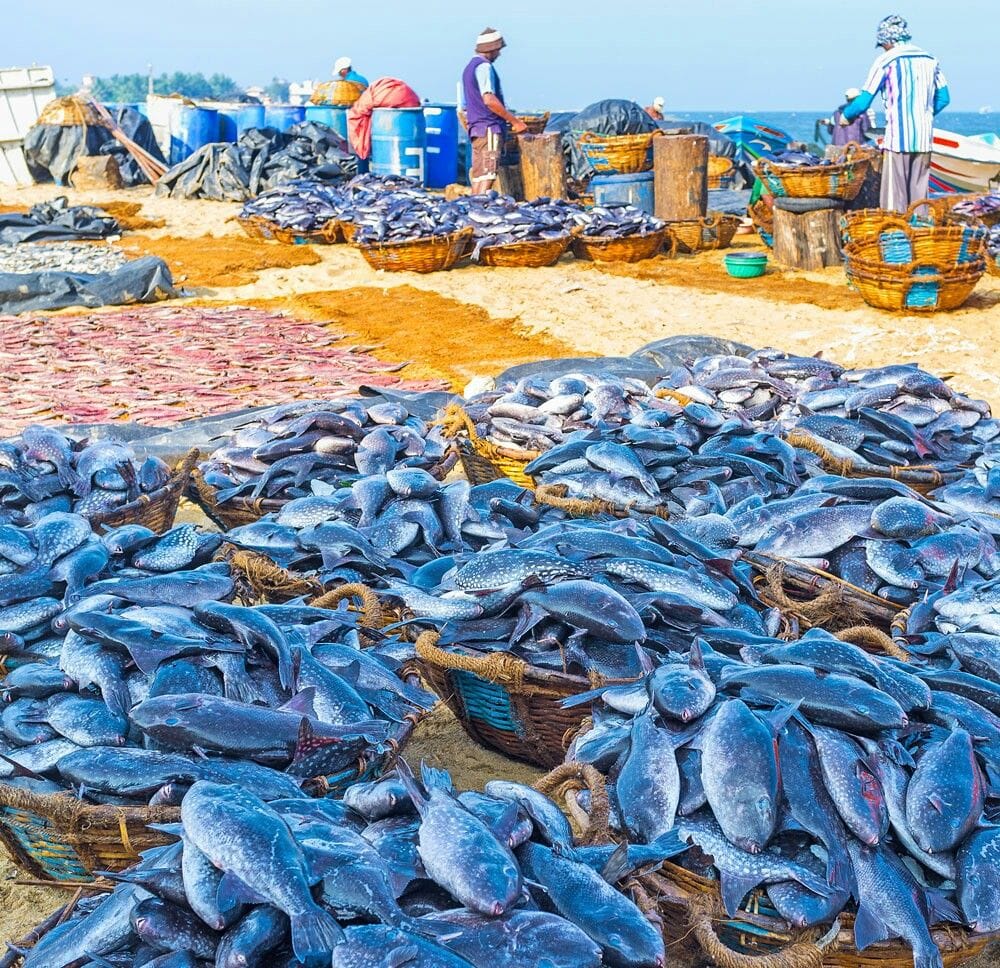
Dutch Heritage, Fishing Traditions & a Coastal Sunset
Your guide greets you at Bandaranaike International Airport with a warm Ayubowan and escorts you to nearby Negombo. Known as “Little Rome” for its abundance of Catholic churches, Negombo has long been shaped by the Portuguese and Dutch who once ruled its cinnamon-rich coast. The town’s 17th-century Dutch Fort and network of canals remain as living reminders of colonial trade.
The day begins with a walk through the bustling Negombo Fish Market, a lively center where fishermen bring in their morning catch and locals haggle for tuna, crabs, and prawns. It is one of Sri Lanka’s oldest fish markets and still central to daily life. Later, you drift along the Negombo Lagoon, a biodiverse ecosystem bordered by coconut groves and mangroves, once a key artery for transporting cinnamon to the ports. As evening falls, the town slows into a softer rhythm. You wander along the beach, watching the silhouettes of traditional catamarans against the fiery sunset, before retiring to your hotel for a restful night.
Why visit Negombo: It is the perfect soft landing to Sri Lanka — rich in history, deeply tied to the ocean, and only minutes from the international airport, giving you an immediate sense of the island’s coastal culture.
Day 2 — Sigiriya & Dambulla
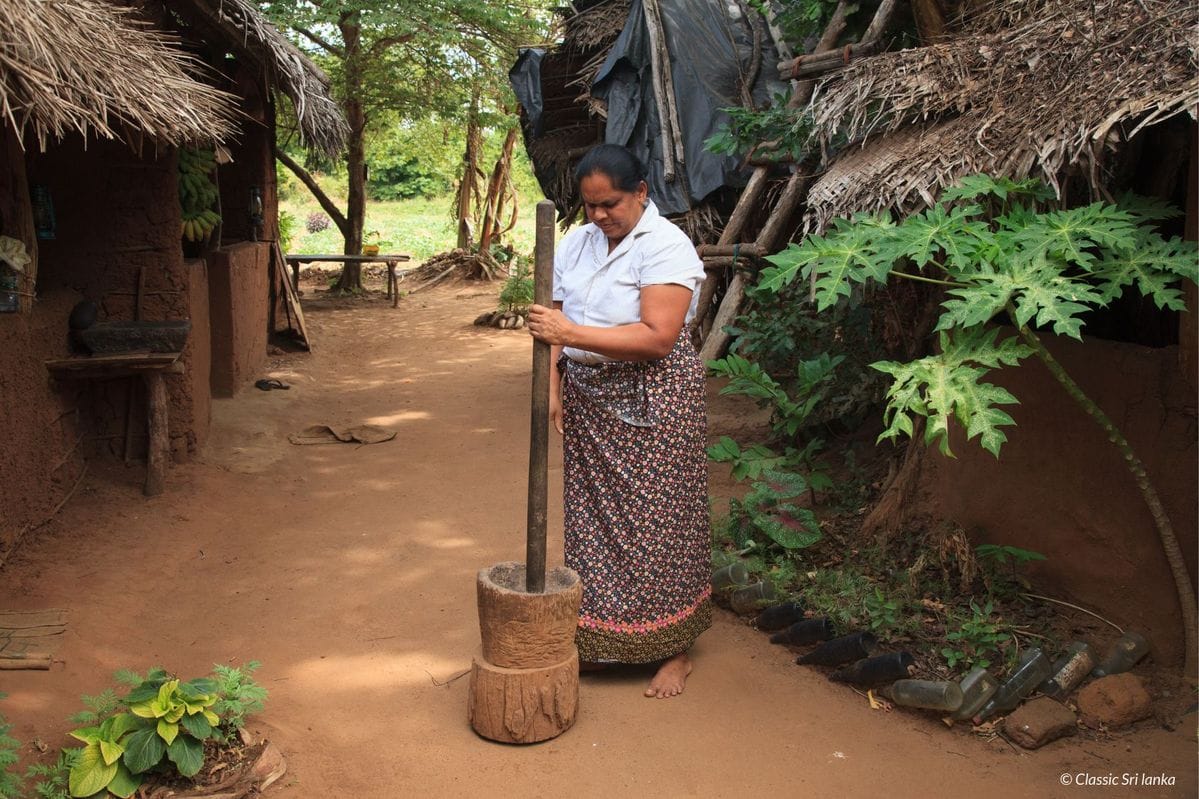
"The Lion Rock Citadel & the Golden Cave Temples"
After breakfast, you leave the coast and journey inland toward Sri Lanka’s Cultural Triangle, where history, mythology, and breathtaking landscapes meet. The highlight is the Sigiriya Rock Fortress, a UNESCO World Heritage Site. Rising nearly 200 meters above the plains, Sigiriya was built in the 5th century by King Kashyapa as a royal citadel. As you climb, your guide reveals the fortress’ many marvels: frescoes of celestial maidens painted on sheer rock walls, the famed Mirror Wall inscribed with ancient verses, and the remarkable symmetry of royal gardens considered some of the oldest landscaped gardens in the world.
Not far away lies the Dambulla Cave Temple, also UNESCO-listed, where you step into a series of caves that have been places of worship for more than two millennia. The ceilings and walls are adorned with over 150 Buddha statues and murals that span centuries of artistry. The cool air inside contrasts with the bright sun outside, creating an atmosphere of quiet reverence.
To balance the day with local life, you are welcomed into a village near Hiriwadunna. A bullock-cart ride and a catamaran crossing take you through rice paddies and lotus-filled tanks before joining a family for a cooking session. Meals are prepared over firewood using clay pots, and each dish is seasoned with freshly ground spices — a true taste of Sri Lankan hospitality.
Why visit Sigiriya & Dambulla: Together they represent Sri Lanka’s dual heritage — the grandeur of its kings and the devotion of its people. This is where archaeology, art, and spirituality converge.
Day 3 — Kandy
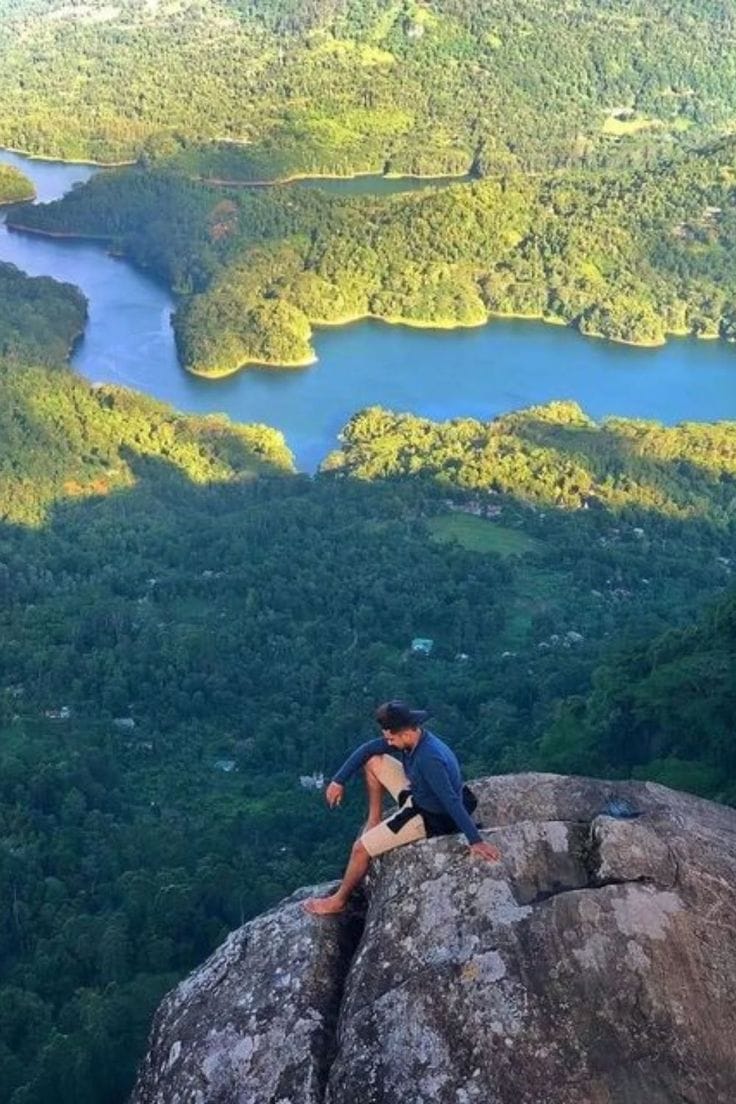
The Sacred Relic & Cultural Rhythms of the Hill Capital
From the dry plains, your journey winds upward into mist-clad hills until you arrive in Kandy, the island’s cultural capital and final stronghold of Sri Lankan royalty. At the heart of the city lies the Temple of the Sacred Tooth Relic, one of the most revered shrines in the Buddhist world. Housing a tooth relic of the Buddha himself, the temple has been the focus of pilgrimages for centuries. The air here is thick with incense and chanting, and you witness the daily puja ceremonies where monks in saffron robes offer flowers and prayers.
Kandy is not only about religion but also about cultural heritage. In the evening, you attend a Kandyan cultural performance, where drummers, dancers, and fire-walkers bring to life rituals that once entertained kings and continue to embody the spirit of the highlands. Afterward, a gentle walk along the shores of Kandy Lake, constructed in 1807 by the last king of Kandy, offers serenity. The lake is home to herons, cormorants, and occasional fruit bats gliding through the dusk.
Why visit Kandy: This city is both spiritual and regal, preserving Sri Lanka’s traditions and connecting travelers to rituals that have endured for centuries.
Day 4 — Nuwara Eliya
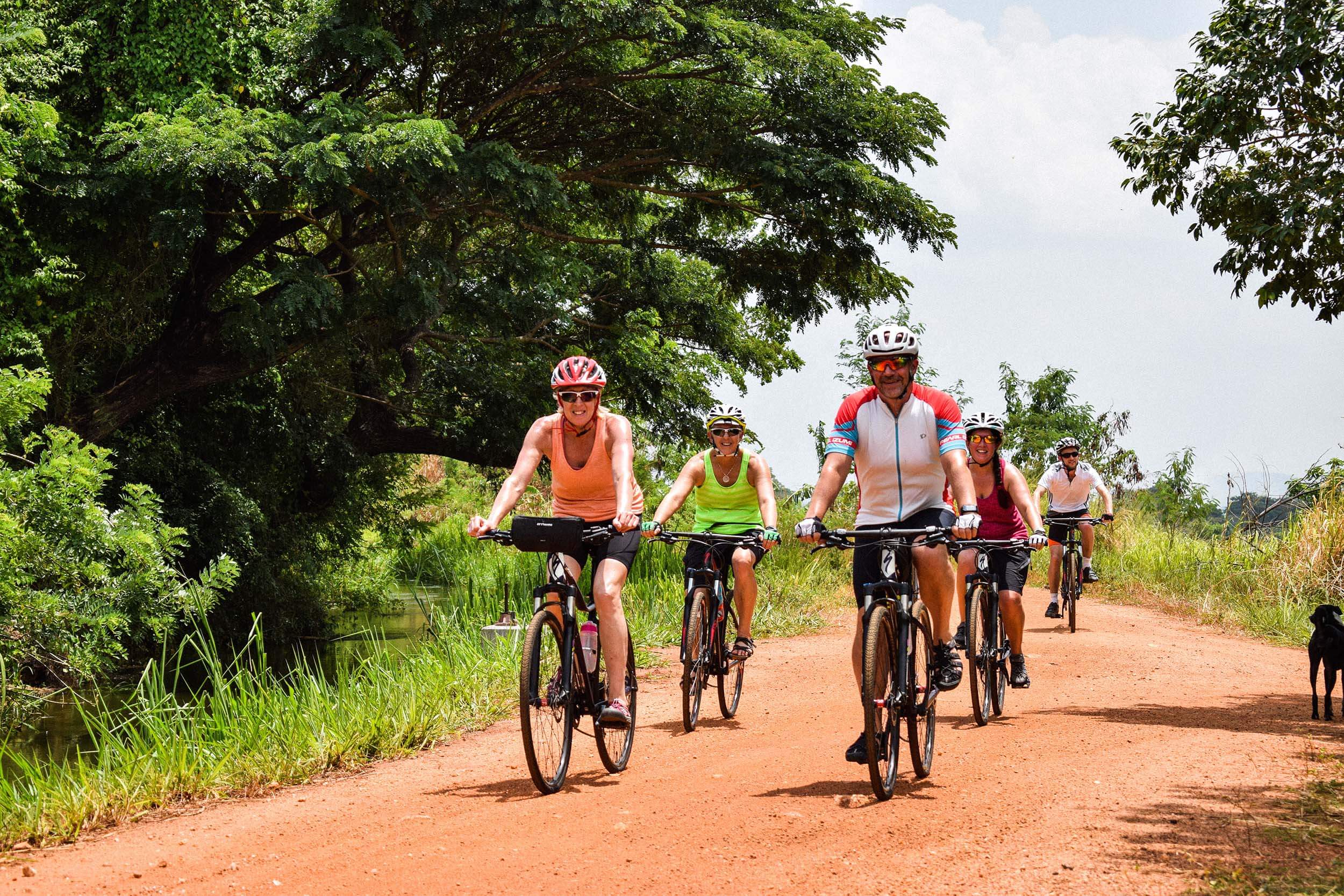
Tea Estates, Mountain Air & Colonial Charm
Your route today takes you higher into the central highlands, passing terraced tea plantations that blanket the hillsides in a thousand shades of green. You arrive in Nuwara Eliya, often called “Little England,” a name it earned during British colonial times for its Tudor-style cottages, rose gardens, and golf courses. At nearly 1,900 meters above sea level, the town offers a refreshing climate with crisp mountain air.
You visit a working tea estate and factory, where the story of Ceylon tea comes alive. Watch tea pluckers skillfully collect the top two leaves and a bud, then follow the process of withering, rolling, fermenting, and drying. A tasting session introduces you to the delicate flavors that made Ceylon tea one of the world’s most prized brews since the 19th century.
Later, a stroll around Gregory Lake provides postcard-perfect scenery, with opportunities for boating and horse rides. The town itself reflects its colonial past — the red-bricked post office, Hakgala Botanical Garden, and quiet country lanes make it feel like a slice of England in the tropics.
Why visit Nuwara Eliya: It is where the heritage of tea meets the romance of the mountains, offering travelers both scenic beauty and historical depth.
Day 5 — Colombo & Departure
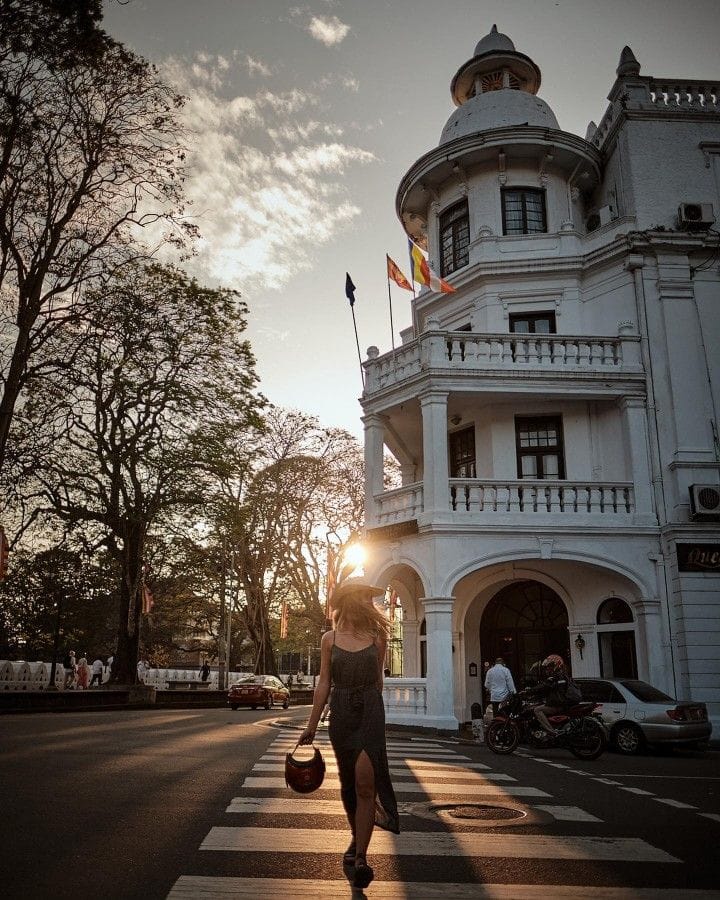
The Capital’s Pulse and Farewell
On your final morning, you descend from the cool hills toward the capital city, Colombo. If time permits before your flight, you explore its lively contrasts. Galle Face Green offers sweeping views of the Indian Ocean, while the restored Dutch Hospital Precinct blends colonial architecture with modern cafés and boutiques. For those seeking local flavor, Pettah Market is a maze of spices, textiles, and street food that reflects the city’s role as a melting pot of cultures.
Finally, your chauffeur transfers you to the airport for your onward journey. As you leave, you carry with you the golden sunsets of Negombo, the majesty of Sigiriya, the spiritual aura of Kandy, and the cool charm of Nuwara Eliya — memories that reflect the very soul of Sri Lanka’s hill country and heritage.Final Notes & Travel Tips
Your journey through Sri Lanka’s Hill Country & Heritage Trail will take you across a landscape of ancient kingdoms, spiritual temples, and mist-covered mountains where time seems to slow down. To ensure your trip is smooth, enriching, and memorable, here are some important notes to keep in mind:
Best Time to Visit
The hill country is most enjoyable between December and April, when the skies are clearer, and the climate is pleasantly cool.
The cultural triangle (Sigiriya, Dambulla, Kandy) can be visited year-round, though mornings are best to avoid heat and crowds.
Packing Essentials
Light cotton wear for the cultural sites, paired with a light jacket or sweater for the cool evenings in Nuwara Eliya.
Comfortable walking shoes are a must for rock climbs (Sigiriya, Dambulla caves) and city strolls.
A scarf or shawl will be handy when visiting temples such as the Temple of the Tooth, where modest attire is required.
Travel Etiquette & Culture
Always remove shoes and hats before entering temples and religious sites.
Photography is welcome in most areas, but avoid taking photos directly facing Buddha statues.
A simple smile and greeting of “Ayubowan” will always be met with warmth from the locals.
Practical Travel Tips
Distances may look short on the map, but Sri Lankan roads are scenic and winding, so expect drives to take longer — your chauffeur-guide will ensure stops and refreshments along the way.
Keep some local currency (LKR) for small purchases, though hotels and larger establishments accept credit cards.
Drinking bottled or filtered water is recommended.
A Journey to Remember
This trail isn’t just about visiting famous landmarks — it’s about living Sri Lanka’s stories. From the sunrise views atop Sigiriya to the quiet tea valleys of Nuwara Eliya, each stop invites you to slow down and embrace the charm of a country where heritage and nature blend seamlessly.
When the journey concludes, you will not only leave with photographs but with the heartbeat of Sri Lanka’s culture, landscapes, and hospitality etched in your memory.
– Until we meet again, may Sri Lanka’s hills, temples, and timeless charm remain with you wherever you go. –




